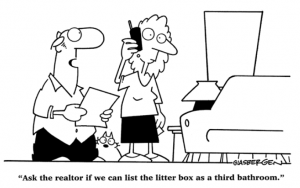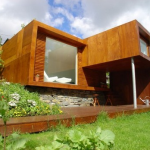It’s all about providing useful information.
This is obviously a tricky question and a matter of much debate today. Which is better for showing potential customers an online preview of a home: photos or video? As they say, beauty is in the eye of the beholder. Both have some strong arguments for and against, and at the moment I believe the correct answer is that it comes down to personal preference.
Let’s examine Photography.
For marketing homes online, it’s hard to go wrong with some quality photos from the best angles of the home. Some of the main advantages of photos are:
- You get high resolution for the relatively small file size.
- The digital photo output is easily manipulated for the web and rarely needs much editing.
- Cameras have been around for awhile now. Remember blowing on the film that came out of your Polaroid or when you got your first Kodak? If you choose photos to create your tour, odds are you are much more likely to be able to shoot some great shots on your own than if you choose to create your own video. Bob Sagat might like your home video, but I’m not sure potential buyers out there will.
- Affordability and high quality of a professional photographer. There’s been a need for professional photography for a long time, they are much easier to find than professional videographers.
- Digital cameras are abundant and affordable. If you don’t already own a decent one, it’s not hard to get your hands on a good one, and you know professional photographers will be equipped with some of the best!
Nevertheless, still photography has some major shortcomings when showing off a property. We’re not talking about showing images of artwork or sweeping views of beautiful landscapes. Home shoppers want to find out as much as they can about the honest truth of a home before dedicating their time to viewing it in person.
- Photos are static, stationary. One photo will give you one view. But rooms have many views from many angles you would have to supply several photos per room to accomplish what video can.
- Sometimes a photo of a room can feel misleading or distorted. Haven’t we all seen the photos with a nice telescopic or wide angle lens that shows some grand living room or entryway, only to arrive in person and wonder where the home we looked at online has gone? In order to effectively market properties there is a need to show them in the best light to entice viewers, but beware of manipulating or deceiving potential customers to get them in the door. This can foster resentment and ill will and ultimately lose the sale.
- Depending on your choice of equipment, angle, and number of photos per room, there’s only so much that you can effectively show with photos.
- Professional photographers can be overpriced. I’ve seen amazingly detailed, beautiful photos created by some photographers, but they can charge over $300 for their real estate shoots. With the quality you can get these days using your own affordable personal equipment, it’s hard to justify spending that kind of money per shoot. Why not do it yourself? My mom is creating a website using her iMac and it looks like she paid someone $3,000 to build the site, create the media, and weave it all in to a great looking site. The tools are out there today for us to grab hold of and do it ourselves including digital photography!
Let’s take a look at what video has to offer.
Using video to show a home online has some inherent advantages over photos, but it’s still in its infancy on the web. People are continually becoming more comfortable with what video has to offer them on the internet. This is clearly illustrated by the explosion in numbers of users of sites like YouTube.
We are a society that grew up around television and we know that video on the internet, like TV before it, can give us much more information in a shorter period of time than still photos or plain text you’d find in newspapers, magazines, and books. Here are some major reasons for using video:
- A video tour more closely shows the images of the way we would see them in person. We move through the home walking and turning our heads, we don’t stand in the middle and spin around, or go from room to room opening our eyes, taking a peak, closing our eyes, moving the next and opening them again.
- Multiple continuous angles and perspectives of each room – not just one or two.
- A more honest reflection of what the home looks like if you were there in person. It’s much harder to hide or conceal with moving video images with photos you can easily show only the angles & views you want.
- More information! Video can capture 30 frames per second, so after 5 minutes (600 seconds) video will give users 18,000 images! A video walk-through gives us a similar feeling to being there in person.
Some major drawbacks exist today in terms of video quality being played back on the web. Some people are still using dial-up to access the internet. It doesn’t make sense for these people to download a 5 minute video that could take hours!
- Thanks to much more data being packed into a video file, it has to be compressed significantly in order to be effectively broadcast on the internet. Much of the quality is lost in this process.
- It can be difficult to create a high quality video due to the simple fact that you are moving. There are many devices out there that can help stability, but this is a major concern. Viewers don’t want to watch your own personal Blair Witch horror flick!
- Video can be more expensive. Typically the tools required to shoot a high-end video are more costly than what can be acquired for photography. A high-end HD digital camcorder along with stabilizing equipment can easily cost over $2,000.
- Video editing skills are usually required. It’s tricky to shoot a great video walk-through on your first try. Either due to awkward moments or a not so graceful step or even backtracking across a room you’ve already shown there are many reasons to want to edit your video. And this takes some practice!
- Real estate videography professionals can be very hard to find in your area. Wedding videographers are more readily accessible, but have they gotten on board with shooting real estate video tours yet?
Right now it’s clear that if you get a fuzzy, wobbly tour that takes too long to download, viewers won’t watch your video. Pictures don’t have this worry. They load so fast that a viewer can easily browse 10-20 in a matter of seconds.
However, if video can overcome its issues of quality and size then I think it is clearly the better medium to showcase your home to buyers who are viewing online. Whether that day has come or not is up to you to decide, but as internet capacity expands, memory cards hold more data, high-quality camcorders become more accessible, and high-speed internet more commonplace, video is poised to take online real estate marketing to the next level.




















